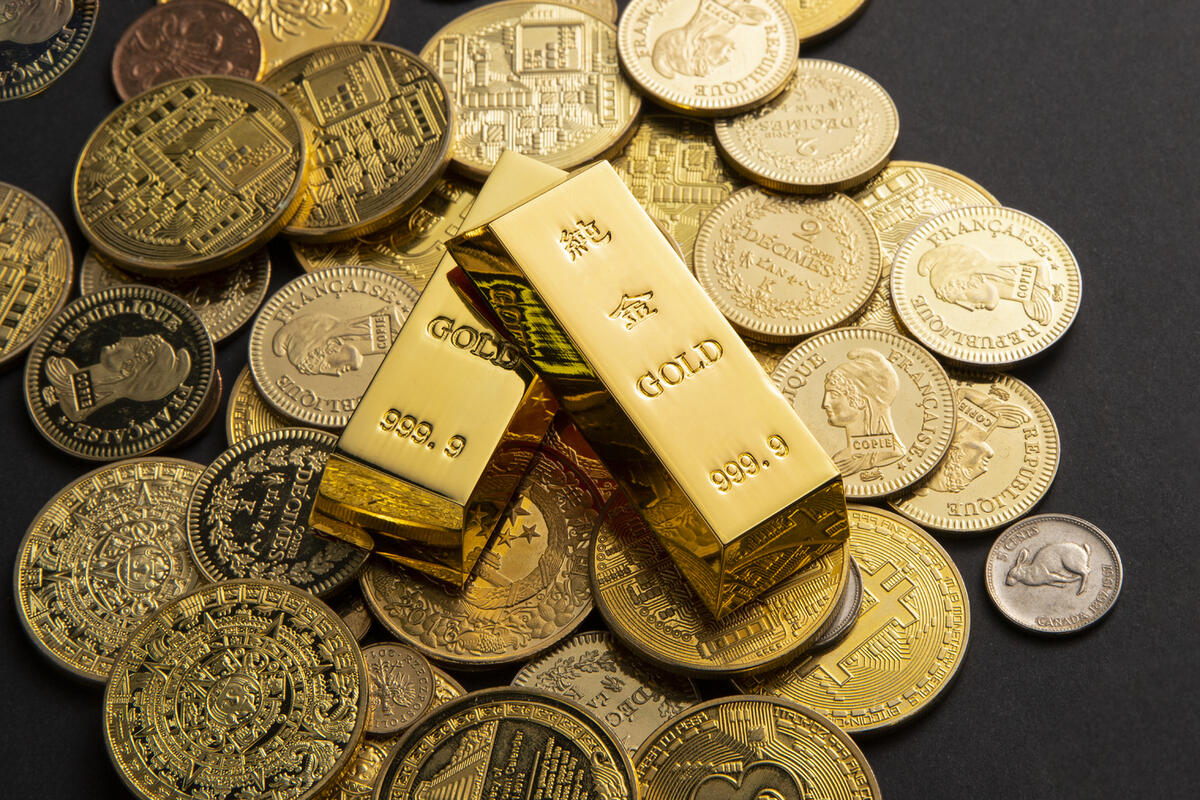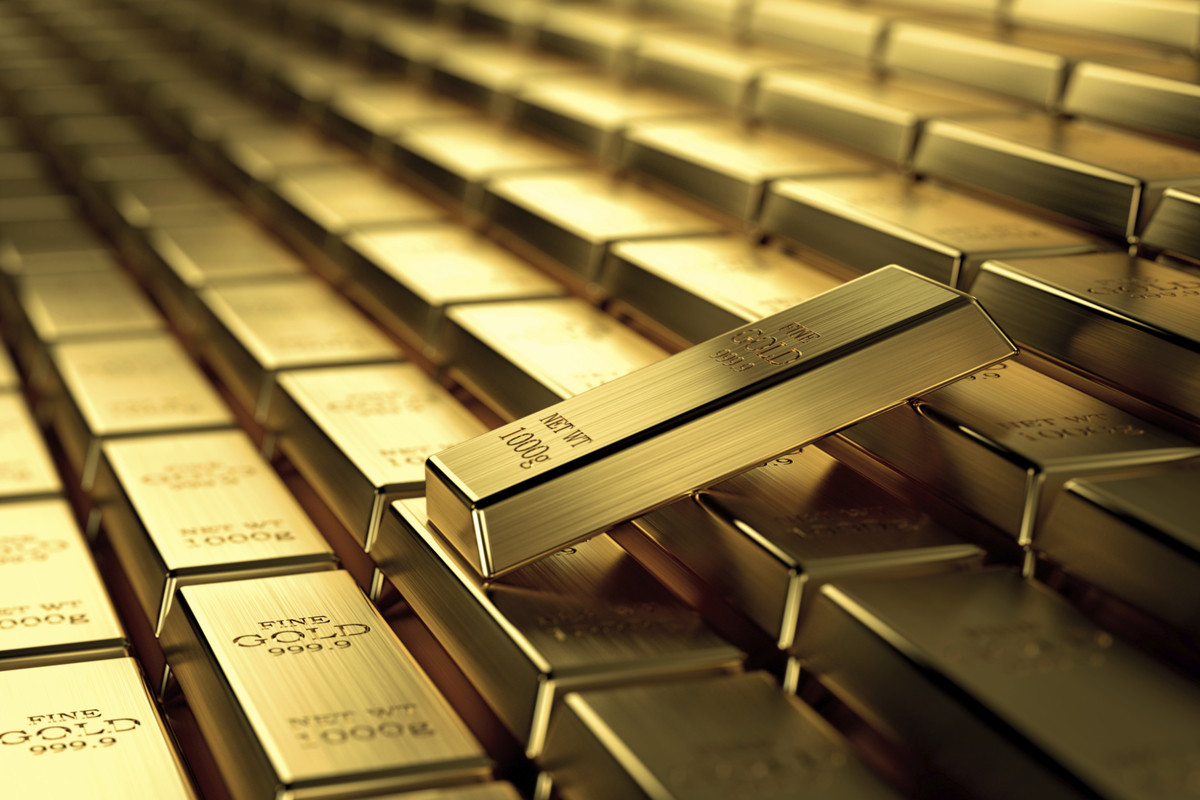Gold is at an all-time high.
An ounce is trading above $3,800, after rising 46% in 2025. And experts believe that any correction would be a reason to position oneself in the precious metal. ‘We are inclined to think that the current rise has room to run,’ explains Claudio Wewel, currency strategist at J. Safra Sarasin Sustainable AM. For their part, Goldman Sachs analysts see the ounce reaching as high as $5,000, although only in a very adverse scenario. In their base case scenario, they put it at $4,000 in mid-2026.
Gold has flexed its muscles as a safe-haven asset in a 2025 fraught with uncertainty. It has done so because the other benchmark safe haven, the dollar, has not functioned as such: the greenback is down 12% this year. At the same time, the weakness of the dollar makes gold cheaper to buy.
It is possible to invest in gold through exchange-traded funds that replicate the price of the metal, and also through vehicles that reflect the stock market performance of companies that mine, process or sell gold. In this article, we will focus on the former, which simply mimic the price of the commodity, without being affected by other issues (such as the management of these mining companies or their efficiency).
Most of these products are backed by physical gold (hence the term Physical in their name), held in the vaults of international banks. These are ETCs (Exchange Traded Commodities), which are the ETFs (Exchange Traded Funds) of commodities. Those who purchase them do not hold physical gold in their hands, but their investment will move in line with the price of the metal.
The WisdomTree Core Physical Gold (ISIN: JE00BN2CJ301) has appreciated by 45% so far this year, fully in line with the rise in gold, as this product is denominated in dollars, the currency in which the precious metal is traded. It is backed by physical gold. The maximum management fee is 0.25% per annum.
It should not be forgotten that this 45% is the rise in the ETC in dollars, but when the investor sells their stake and converts it into euros, that return will suffer from the fall of the dollar against the euro. Hence, all the ETCs mentioned in this article that are denominated in dollars rise, apparently, more than those that are already in euros. ‘The ideal is to buy products in euros, to avoid currency risk,’ warns Fernando Luque, senior editor at Morningstar. Although, at the same time, investing in another currency can offer opportunities for appreciation; it is up to the investor to decide whether to take that risk. The euro version of WisdomTree Core Physical Gold is up nearly 31% this year.
Fernando Luque also explains that ideally, these products should be backed by physical gold, rather than being synthetic replicas. Synthetic replication exchange-traded funds mimic the behaviour of the price of gold using derivatives, usually futures contracts or swaps.
The Xtrackers IE Physical Gold ETC (DE000A2T0VU5), a dollar-denominated product backed by physical gold, is up 44% in 2025. The maximum management fee is 0.11%. Xtrackers is the exchange-traded fund brand of DWS, an independent manager integrated into the Deutsche Bank group.
The WisdomTree Physical Swiss Gold ETC (JE00B588CD74), denominated in dollars, is up 41%. The management fee is 0.50%. WisdomTree is a global asset manager specialising in the creation and management of exchange-traded funds, based in New York.
The Xtrackers Physical Gold EUR Hedged ETC (DE000A1EK0G3) has currency hedging, which ‘allows euro investors to gain exposure to the underlying gold while minimising the impact of euro/dollar exchange rate risk,’ as explained in the product’s legal document. It is up just over 33% for the year.

Identical returns of around 31% (as of 1 October) are offered by euro-denominated products such as the iShares Physical Gold ETC (IE00B4ND3602), the Xetra-Gold (DE000A0S9GB0), the Invesco Physical Gold ETC (IE00B579F325) and the Amundi Physical Gold ETC C (FR0013416716), all with a maximum management fee of 0.12%, according to Morningstar. WisdomTree’s Gold Bullion Securities (GB00B00FHZ82) is practically the same, rising just over 30% in the year; the maximum management fee is 0.40%.
For those who prefer to invest in mining companies, one possible option through ETFs is the VanEck Gold Miners ETF (IE00BQQP9F84), which has soared 100% so far this year. Its portfolio includes companies such as Agnico Eagle Mines, Newmont, Barrick Mining and Gold Fields.
It should not be forgotten that ETFs and ETCs do not have the tax deferral advantage offered by investment funds, but funds rarely hold physical gold directly; they usually invest in ETCs or mining companies. For those who want to invest in mining companies, the advantage of choosing funds over ETFs is that transfers between different funds are tax-free, allowing money to be moved from one fund to another without having to pay tax, regardless of whether profits or losses have been made. Tax is only payable when the fund is sold and the investment is redeemed. In return, ETFs and ETCs offer another significant advantage: their low costs.





